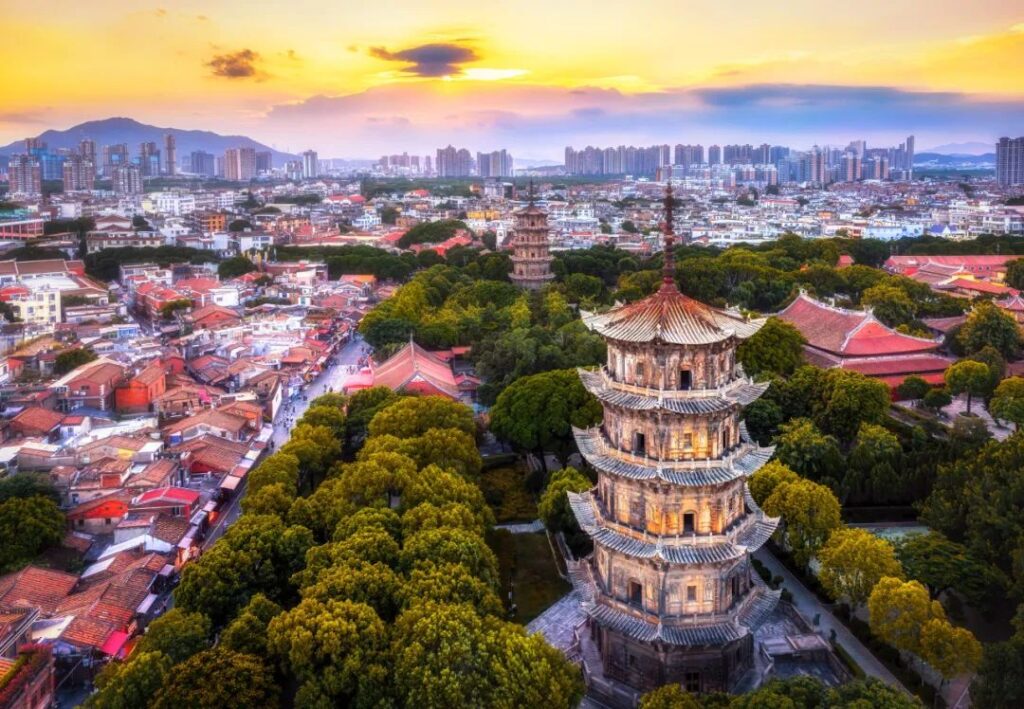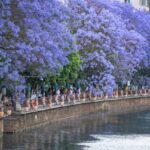Quanzhou, the once-magnificent Oriental port, boasts a history as vast and profound as the starry sky and the boundless sea. Every brick and tile here carries the enduring splendor and memories of a thousand years.

In Quanzhou, tradition and modernity harmoniously coexist, while East and West converge, resembling a vibrant and colorful painting.
The phrase “openness and inclusiveness” is the soul of Quanzhou, permeating every corner of this ancient city and imbuing it with vibrant vitality. From the ancient alleys to the modern buildings, everything exudes Quanzhou’s unique charm.
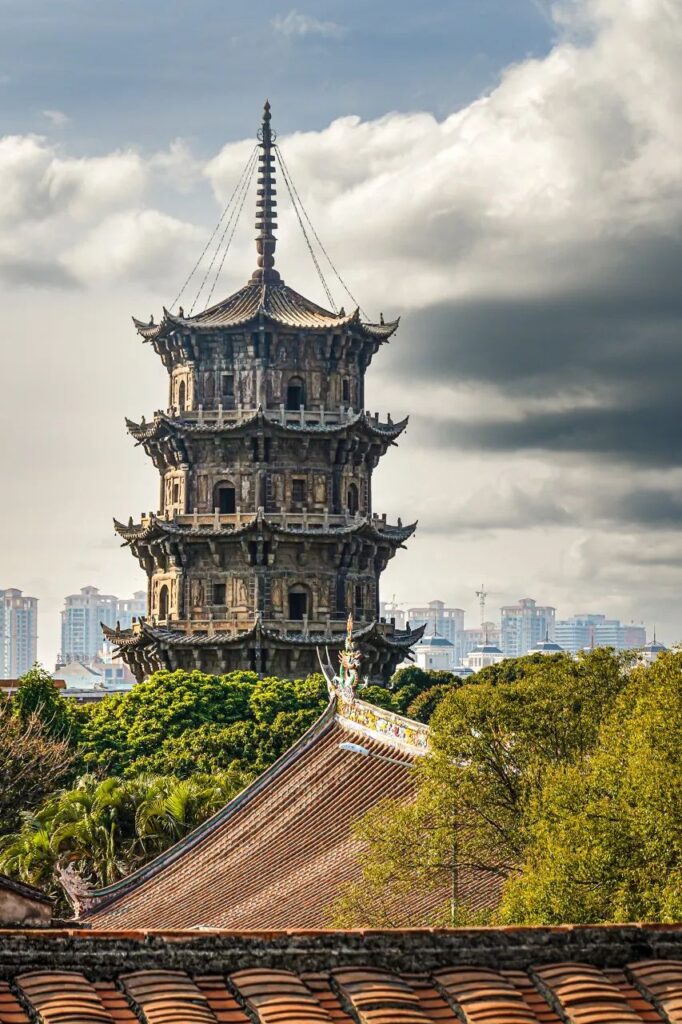
Quanzhou embraces the grandeur of mountains, the vastness of the sea, and the tenderness of rivers and lakes. As you stroll through this city, you will not only appreciate the depth of history but also experience the comfort and tranquility of life.

From the dazzling starting point of the “Maritime Silk Road” to today’s “World Heritage City,” Quanzhou has been quietly cultivating its profound cultural heritage and unique charm, captivating the world’s attention.
Like a modest and reserved sage, Quanzhou may not be ostentatious, but each stunning revelation is enough to leave the world in awe.
Quanzhou is showcasing its past, present, and future to the world with its unique allure. If you are willing to delve deeper, you will discover that the beauty and wonder of this city were predestined long ago.
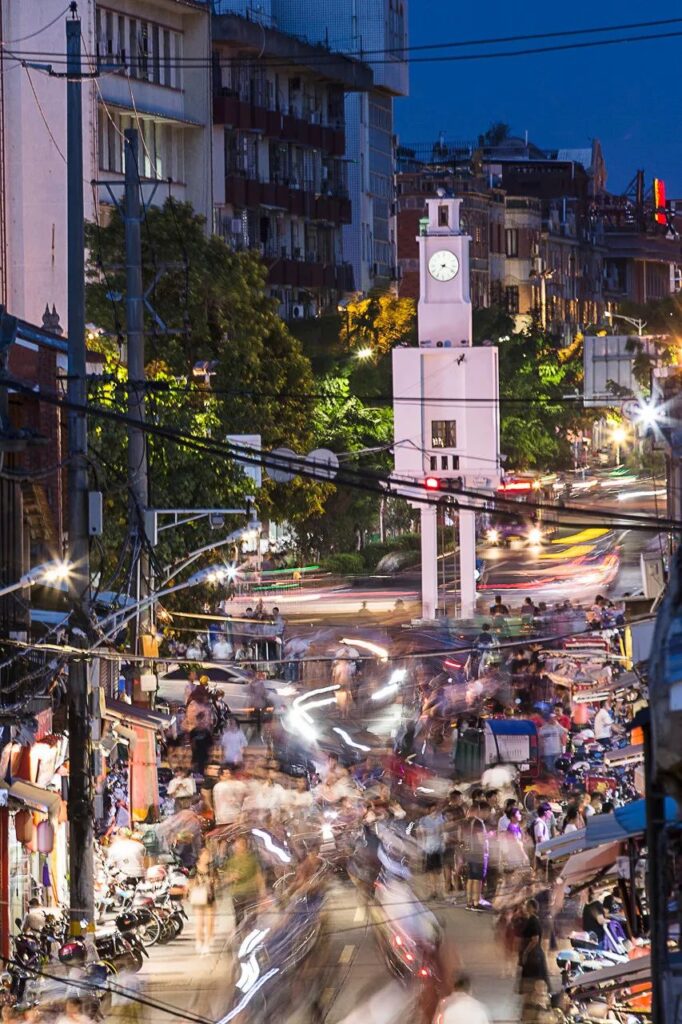
World Museum of Religions
Kaiyuan Temple is undoubtedly the heart of Quanzhou, an indelible mark on this city.
As a shining pearl of Buddhism on the southeast coast, its history is like a weighty classic, dating back more than 1,300 years. Over a millennium, Kaiyuan Temple has not only guarded the essence of Buddhism but also accommodated the historical footprints of Taoism, Brahmanism, and even Christianity, becoming a sacred place where diverse cultures converge.
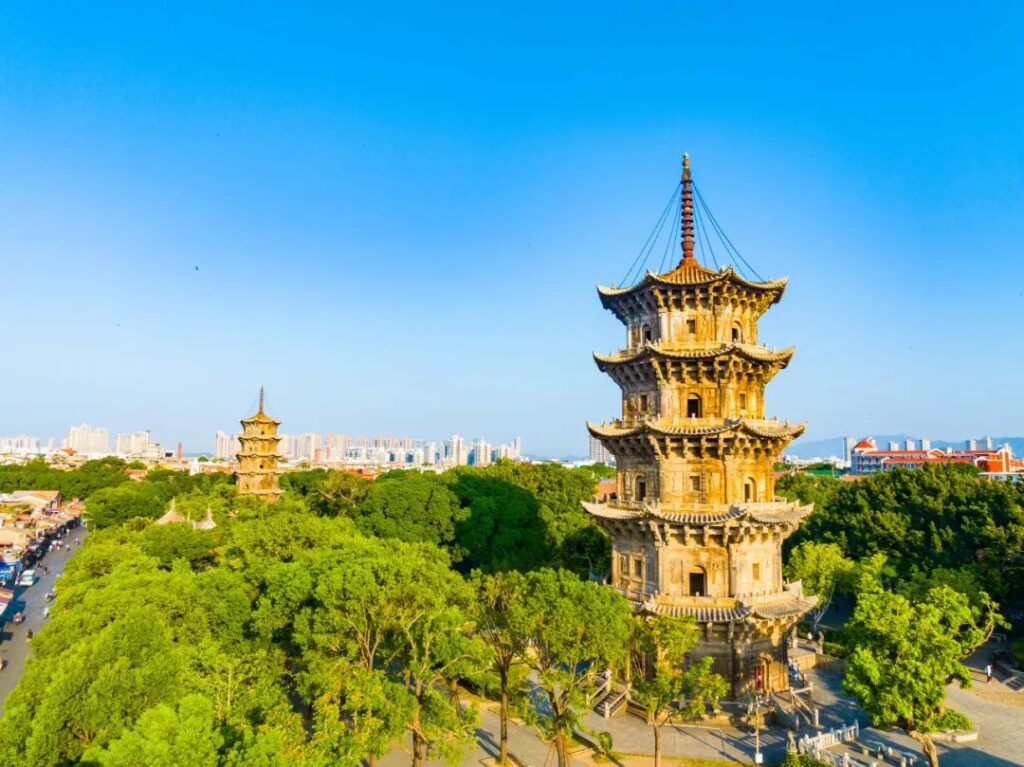
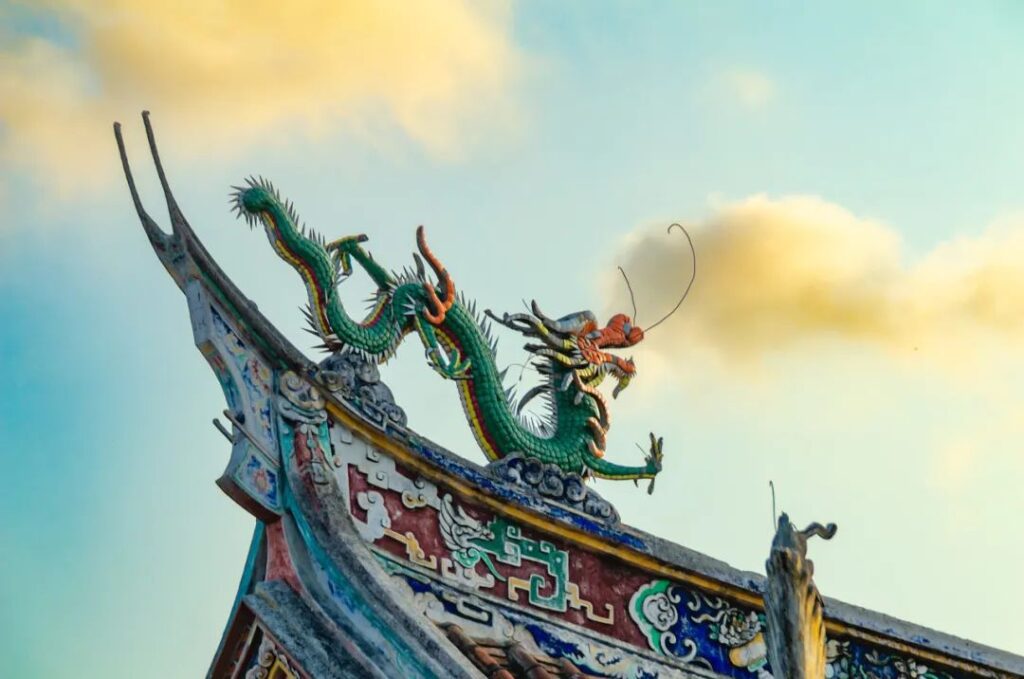
In the hearts of Quanzhou people, Kaiyuan Temple has long surpassed the boundaries of religion; it is the soul of a city and a monument to history.
Kaiyuan Temple is serene and solemn. At dawn, as the first rays of sunlight fall, the temple begins its daily routine. Devout worshippers pray fervently, while morning exercisers pass by lightly. Under the bodhi tree, the elderly are at ease, and the occasional birdsong and the silhouettes of monks sweeping the courtyard together form a harmonious and tranquil painting.
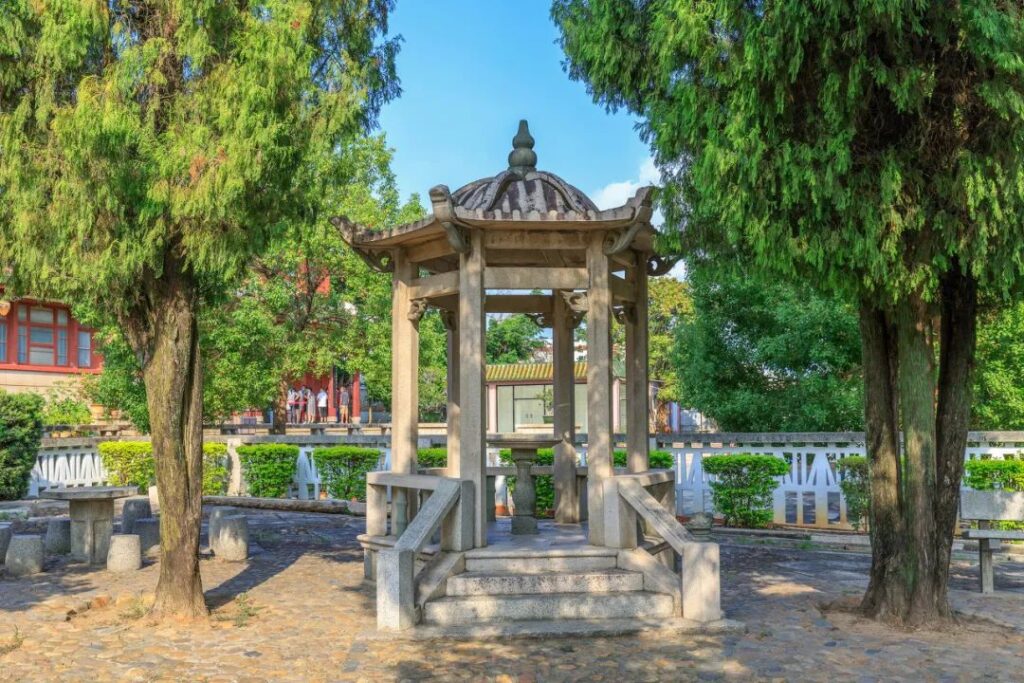
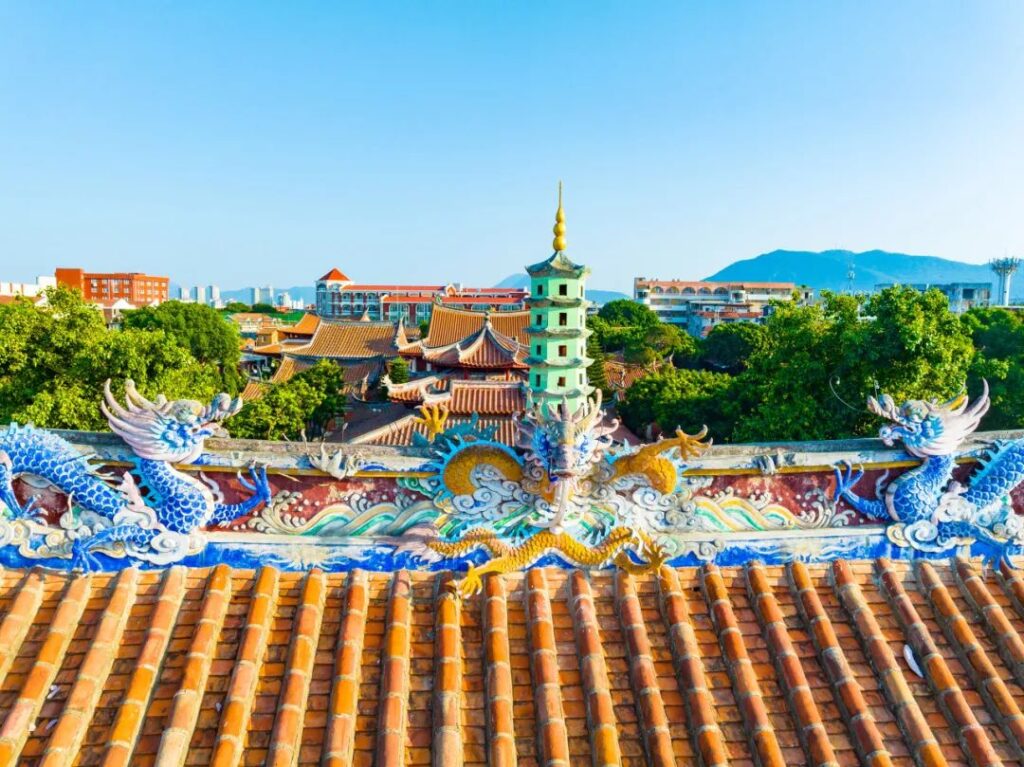
Entering Kaiyuan Temple, towering ancient trees catch the eye. They have witnessed the temple’s vicissitudes and glory, and they carry Quanzhou people’s awe and respect for nature. These ancient trees are the objects of Quanzhou people’s devout faith, and they often pray to them for peace and blessings.
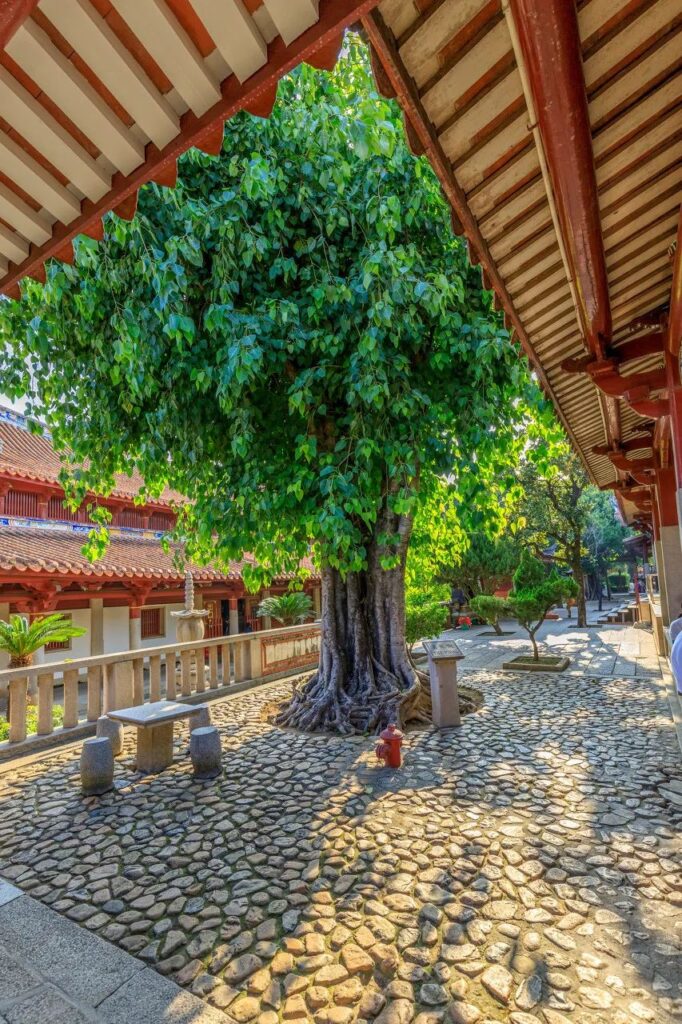
Inside Kaiyuan Temple, the most eye-catching are the two Song Dynasty pagodas. Like two guardian deities, they stand in the temple, witnessing Quanzhou’s historical changes. Every spring, when the kapok flowers bloom, the East and West Pagodas quietly gaze at each other, as if narrating a thousand-year-old story.
These two ancient pagodas have long become the symbols of Quanzhou. No matter from which angle you look, you can see their majestic silhouettes, exuding an ancient and vicissitudinous aura.
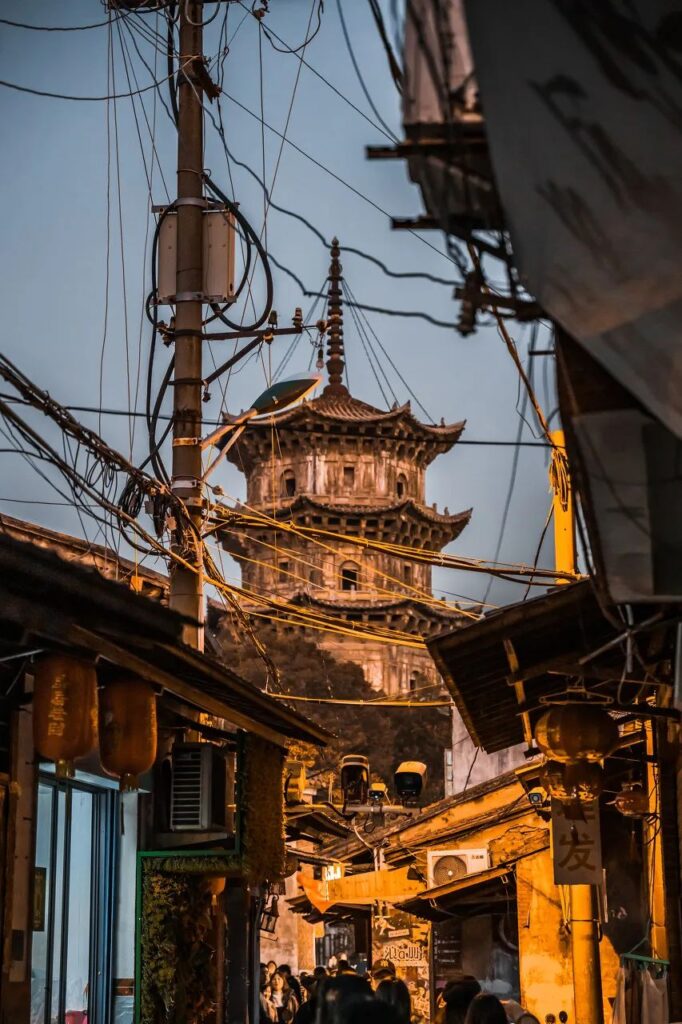
Chengtin Temple is located at the end of the bustling “Chaoren Street” South Street, like a pure land, cut off from the noise of the world.
Inside the temple, the central axis is 300 meters long, with the Heavenly Kings Hall, Maitreya Hall, Mahavira Hall, Dharma Hall, and Manjusri Hall arranged in succession. The stunning murals are dazzling to the eyes.
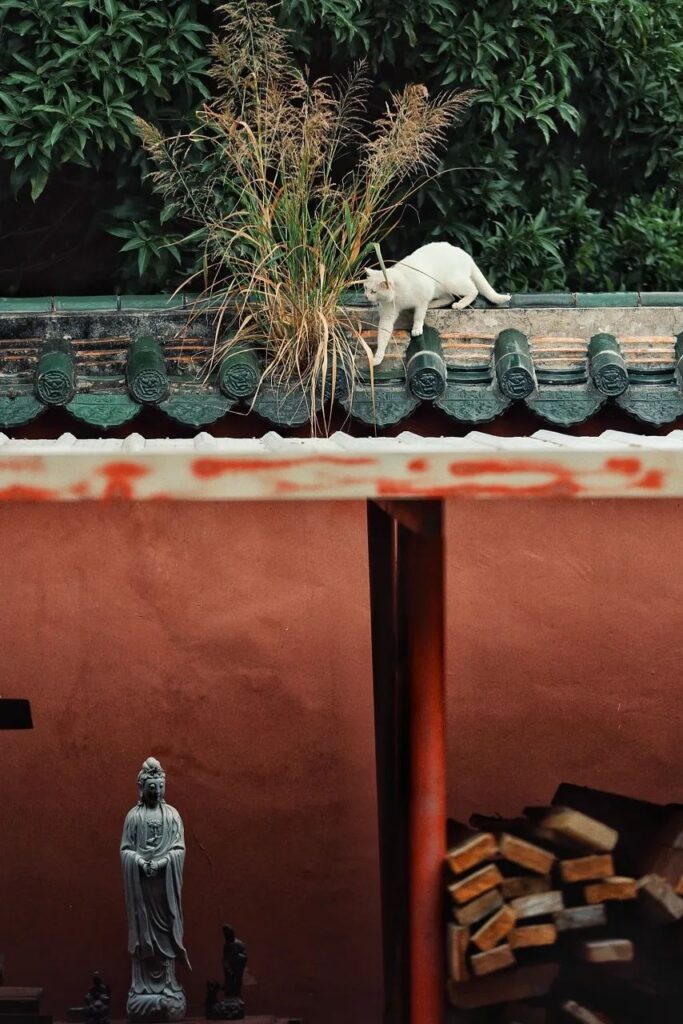
There are few tourists here, only a small number of locals come to burn incense and worship Buddha. The temple’s tranquility makes the sound of banyan tree whiskers swaying in the wind particularly clear. Chengtin Temple is more like a garden of serenity amidst the bustle, with worldly prosperity on one side and Buddhist purity on the other. Every scene and object is full of Zen meaning.
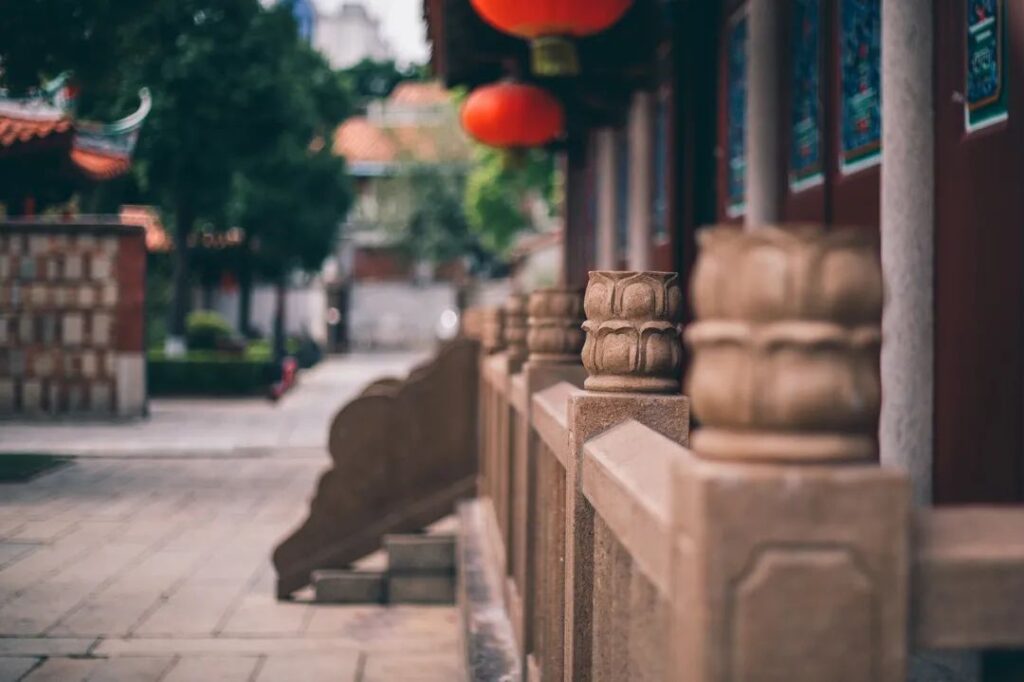
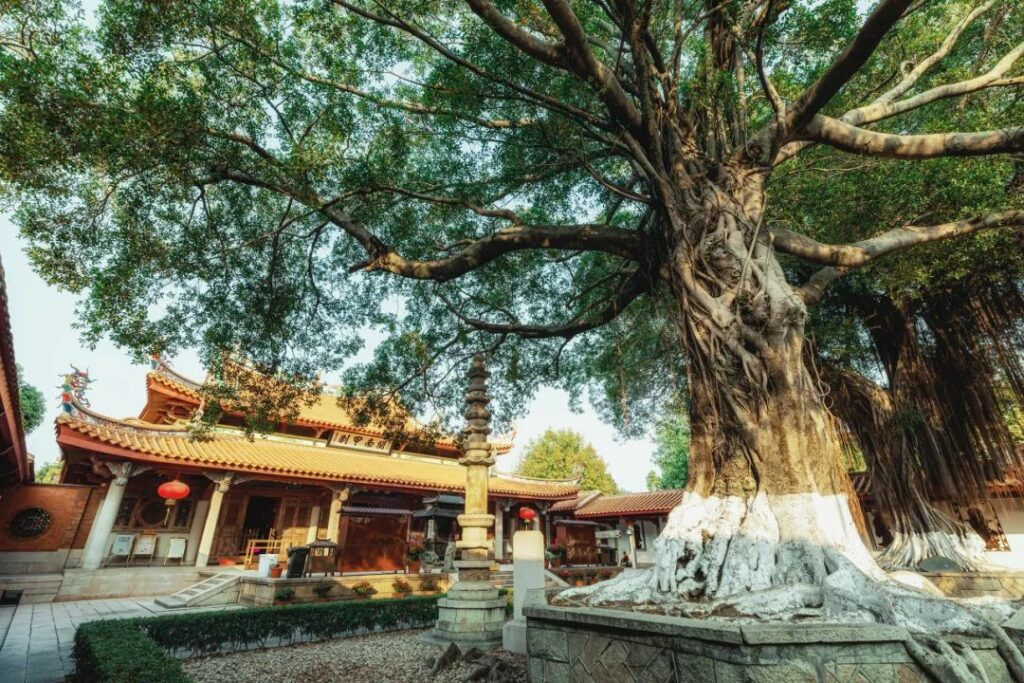
Caoan Temple is the only surviving Manichaean temple in China and the only remaining Manichaean temple site in the world.
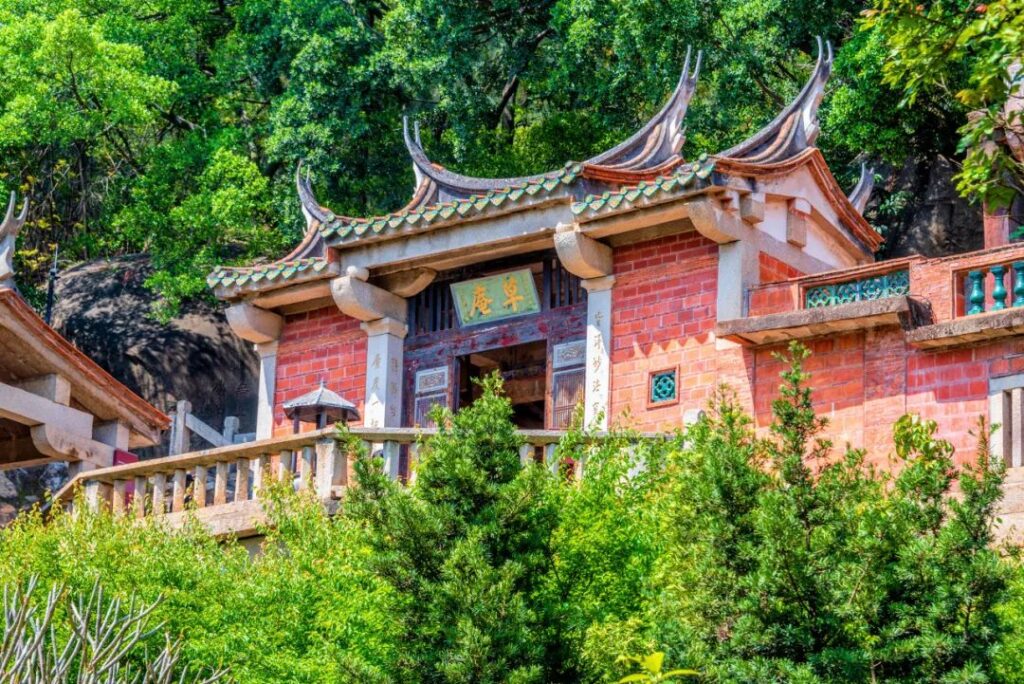
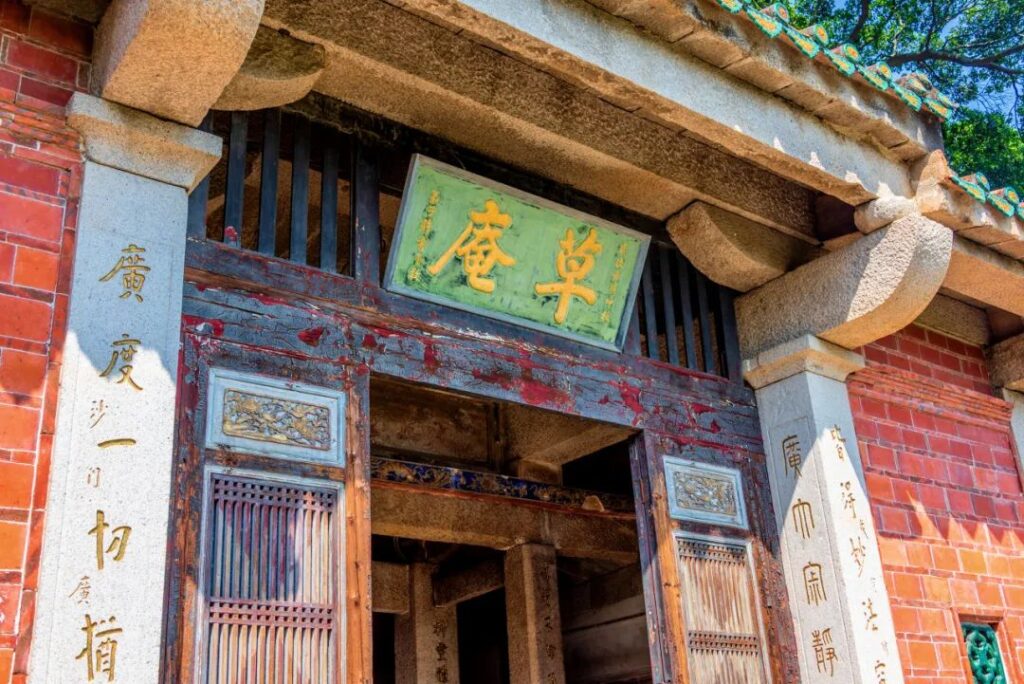
The temple is nestled against a huge rock, hidden among the grass and trees, mysterious and quiet. Standing on the high platform and looking into the distance, Quanzhou’s scenery is all in view. Although not prosperous, it is full of the ease and tranquility unique to a small town.
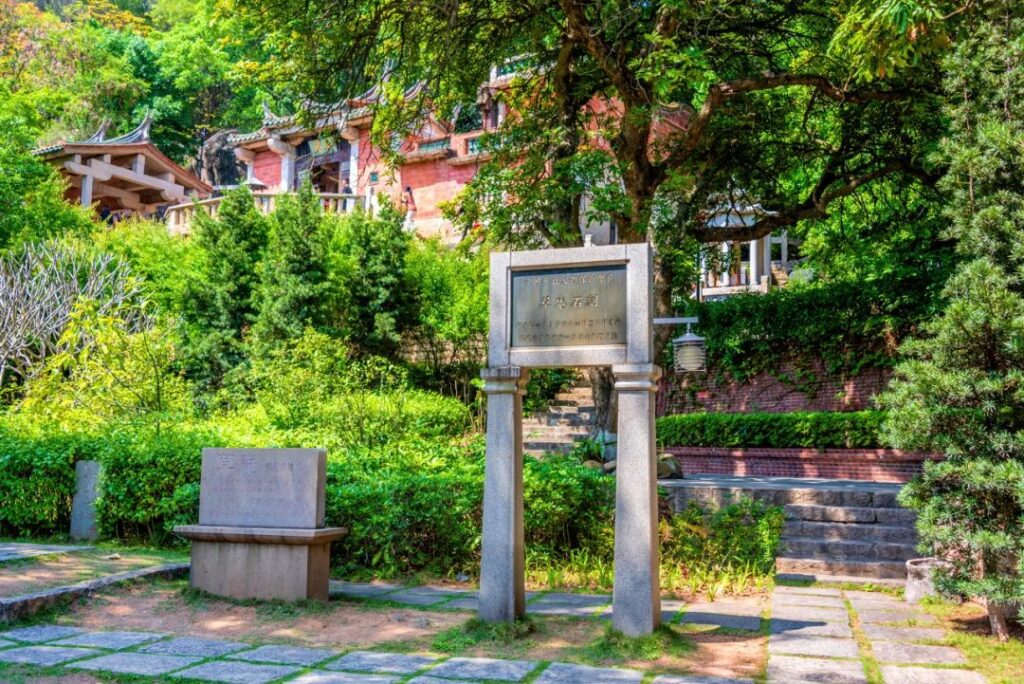
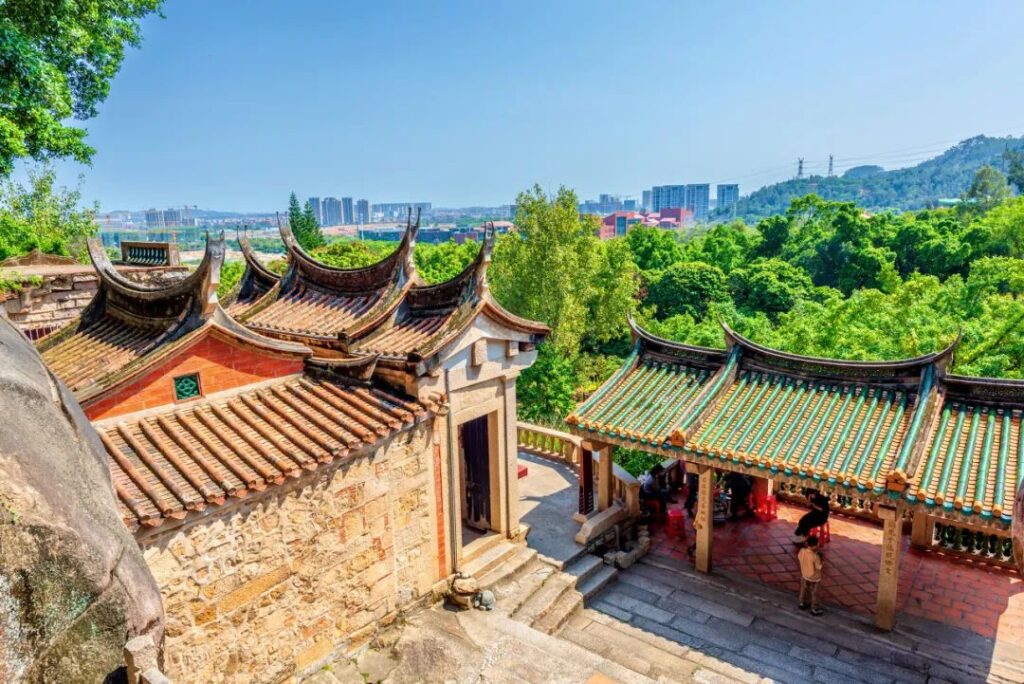
Qingjing Mosque is the earliest and oldest existing Islamic mosque with Arabian architectural style in China. Along with Xianghe Temple in Yangzhou, Huaisheng Mosque in Guangzhou, and Phoenix Mosque in Hangzhou, it is known as one of the “Four Ancient Mosques of Chinese Islam.”
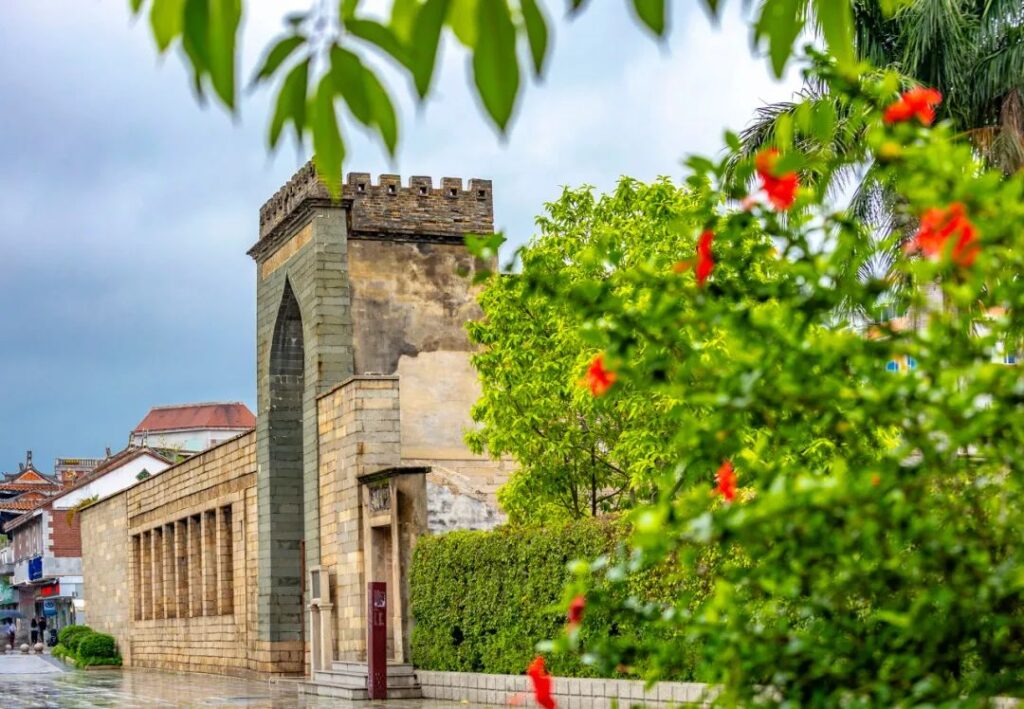
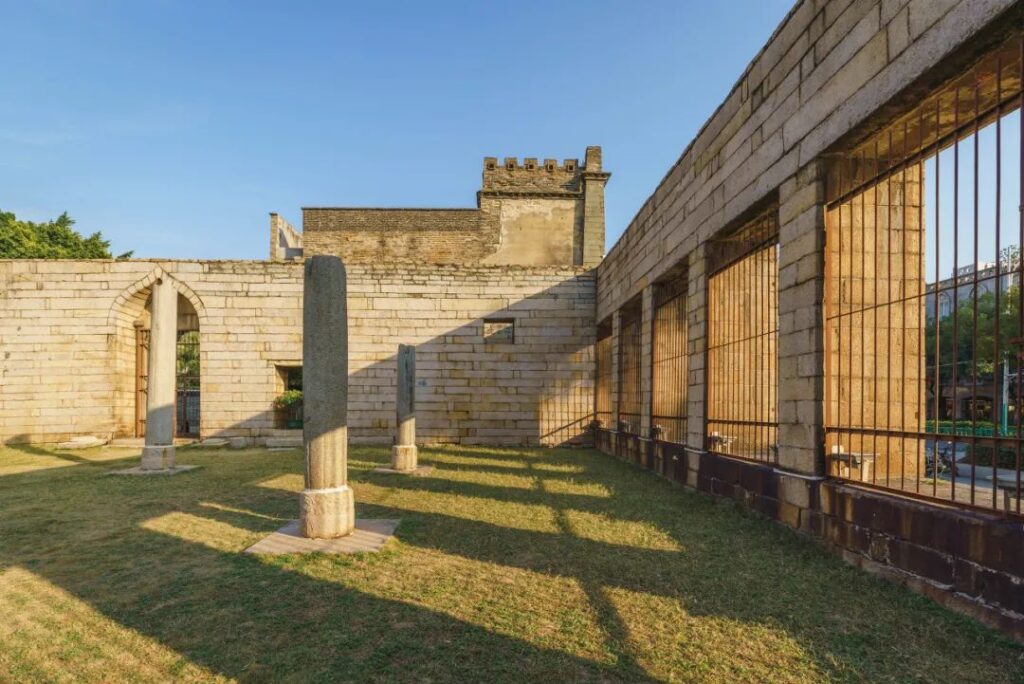
Since Islam does not depict images, Qingjing Mosque is simple and plain overall. Although the dome has been destroyed, the pillars and windows still tell the vicissitudes of history.
Walking among them, it is hard not to feel a tinge of melancholy. This kind of incomplete beauty is also a regret, leaving an indelible mark on Quanzhou’s history.
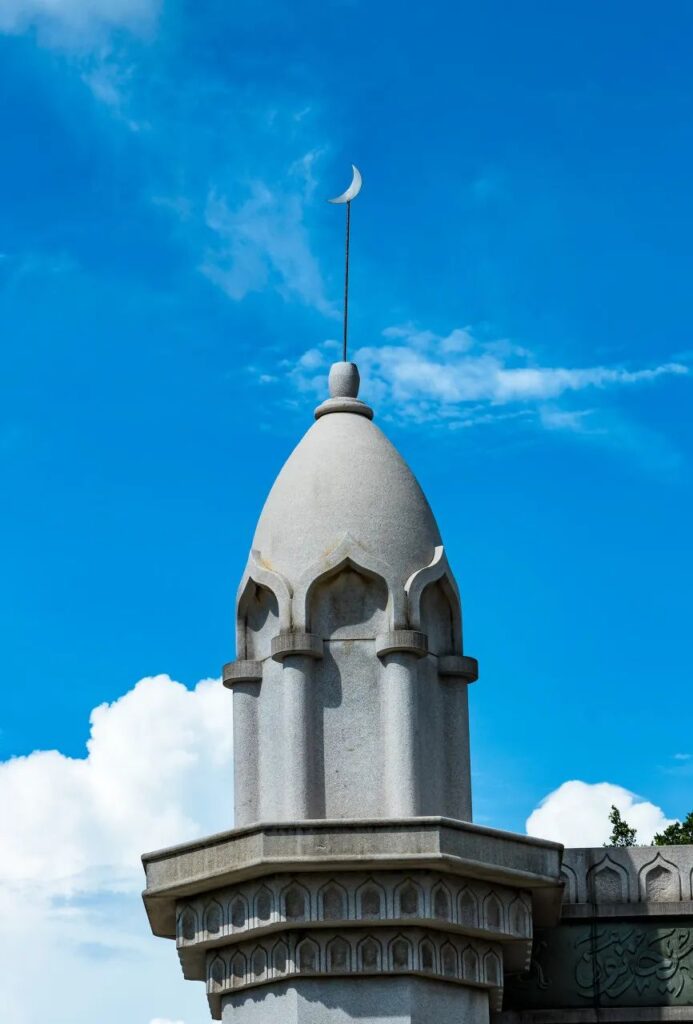
Quanzhou, like a mysterious realm hidden from the world, quietly flows with its own stories.
Strolling through the streets and alleys of this city, it feels as if you have stepped into a leisurely and carefree painting. Every step, every turn, holds an unintentional little surprise, waiting for your discovery.

To gain a deep understanding of Quanzhou, those old streets permeated with the aroma of life are a must-visit. Among these numerous old streets, West Street is undoubtedly the most historically profound. This 1,700-meter-long old street carries a rich history of over 1,300 years and has symbolized Quanzhou’s prosperity and flourishing since the Song Dynasty.
West Street is like a string of dazzling pearl necklaces, linking together Quanzhou’s cultural relics, ancient dwellings, and folk tales from the Tang and Song Dynasties. It narrates the story of the ancient city’s transformation through centuries of vicissitudes, as if transporting people back to that glorious era.
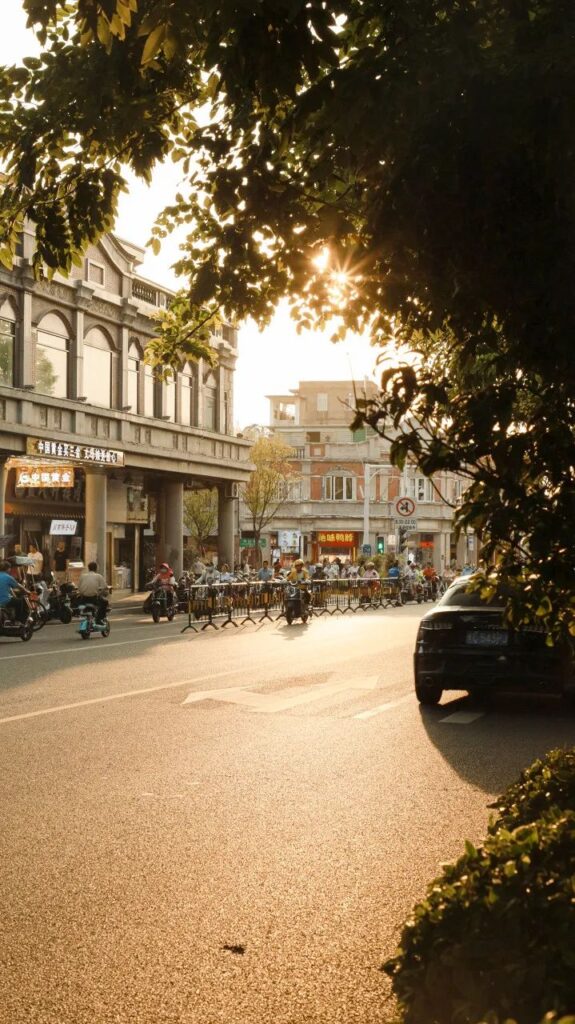
“Two pagodas in the east and west, one street in the north and south.” This phrase reveals another important old street in Quanzhou—Zhongshan Road.
This old street has witnessed Quanzhou’s transition from cement roads to stone roads, carrying the charm of the southern country and the complete rows of arcade buildings. Walking here, you can experience the most authentic life in Quanzhou, as if becoming a part of this city yourself.
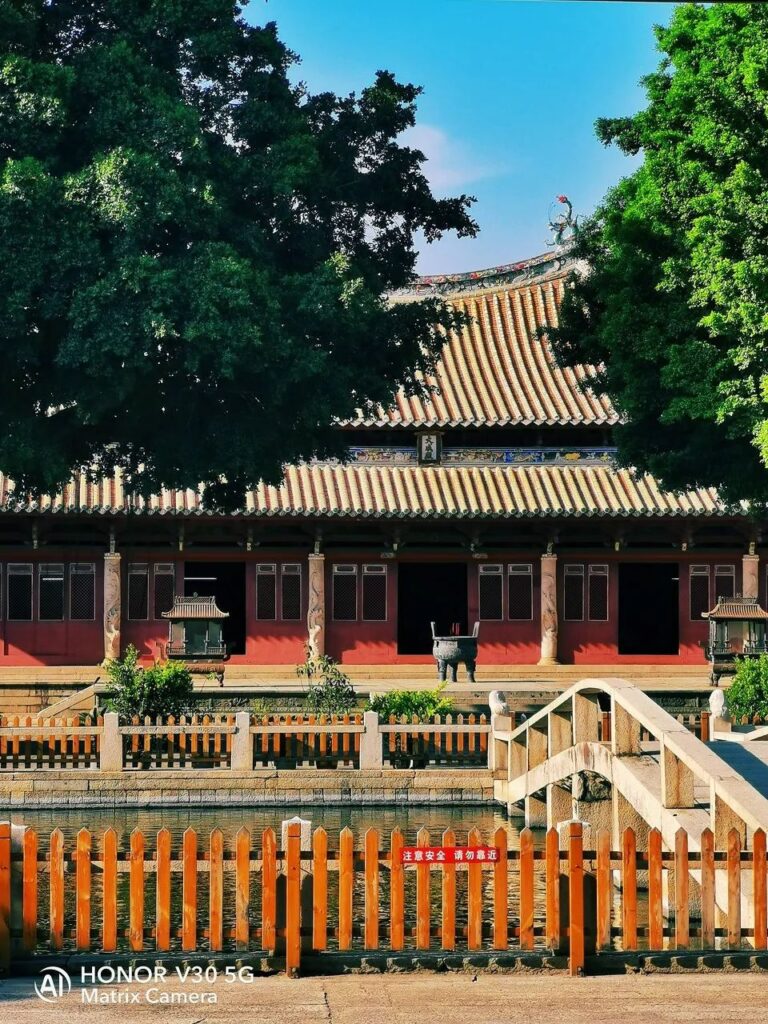
At the intersection of East-West Street and Zhongshan Road stands a clock tower. It is one of Quanzhou’s most famous landmarks, even ranking first in the entire Fujian Province.
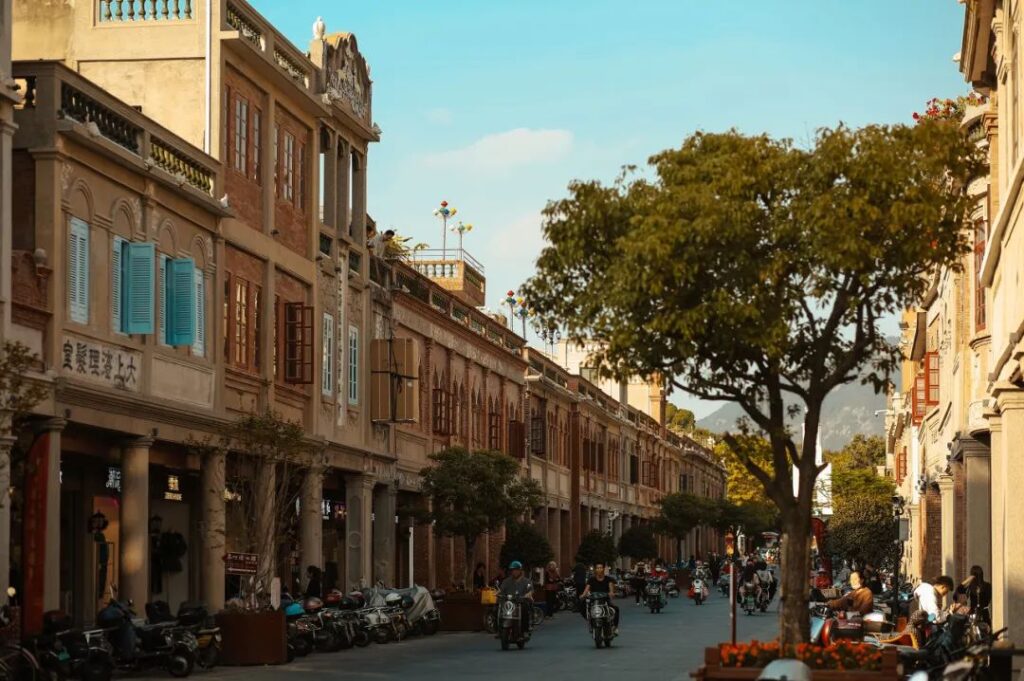
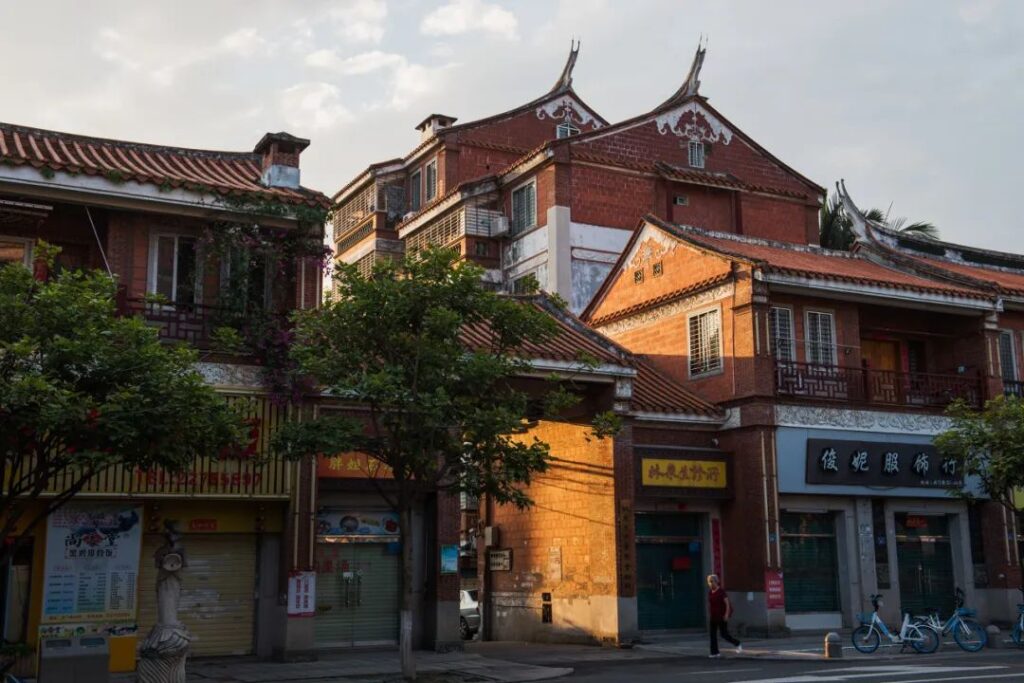
During the day, the pure white clock tower contrasts with the red houses on both sides of the street, appearing particularly dazzling;
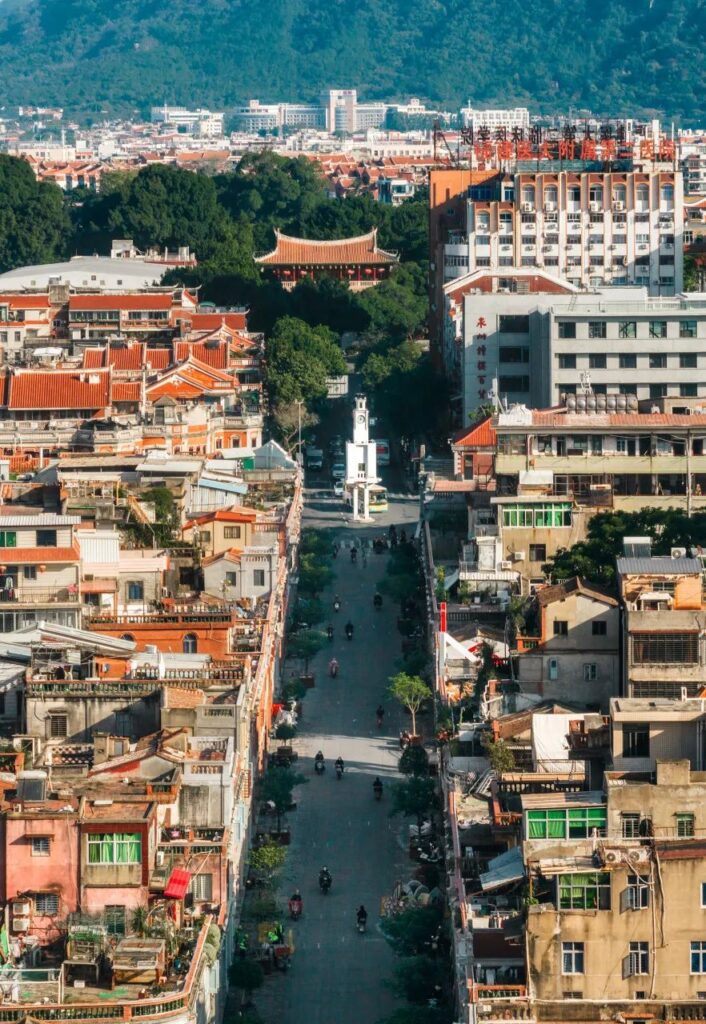
At night, the brilliant lights make it even more solemn and majestic. This clock tower is not only a building but also a memory and pride in the hearts of Quanzhou people.
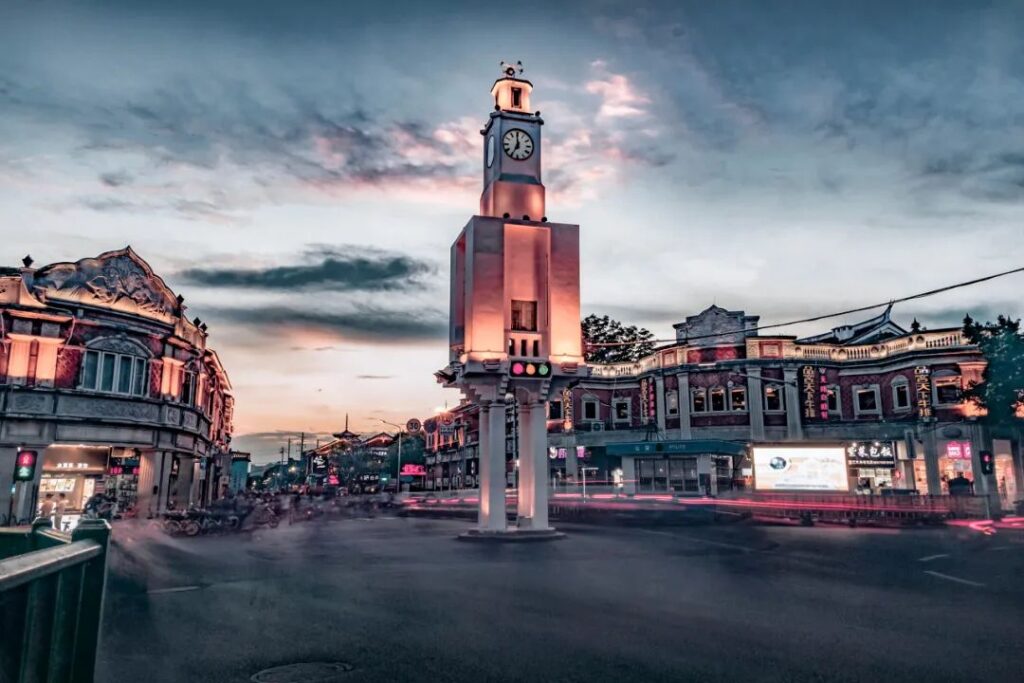
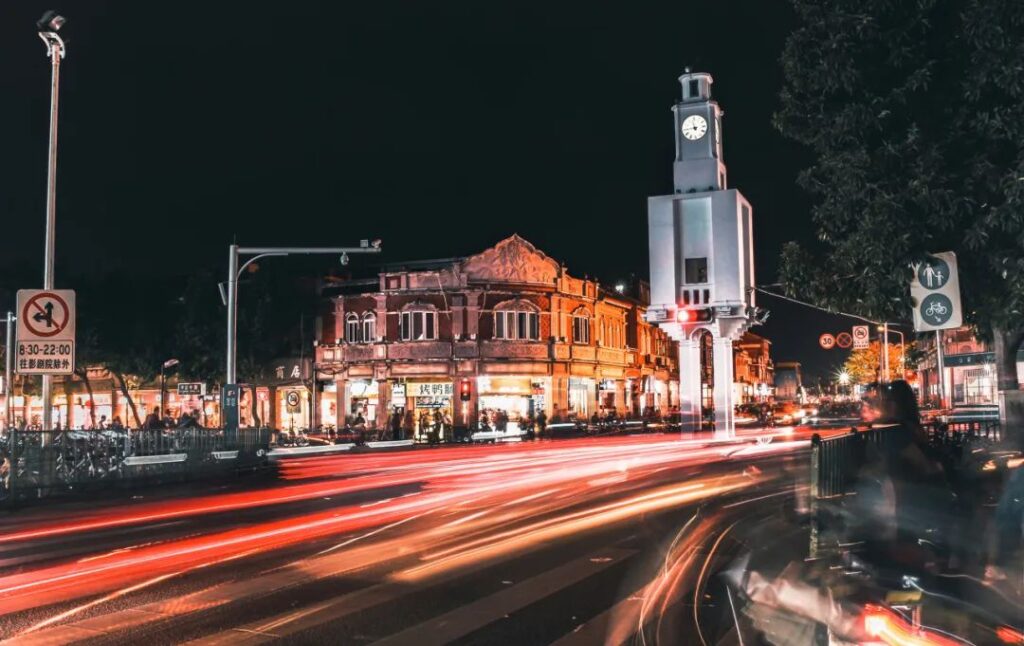
Xianpu Village, as an important port at the starting point of Quanzhou’s Maritime Silk Road, has a unique charm. The oyster shell houses here exude the remnants of the ancient city, with densely packed large shells on the outer walls gleaming in the sunlight, as if allowing people to feel the breath of the ocean in advance.
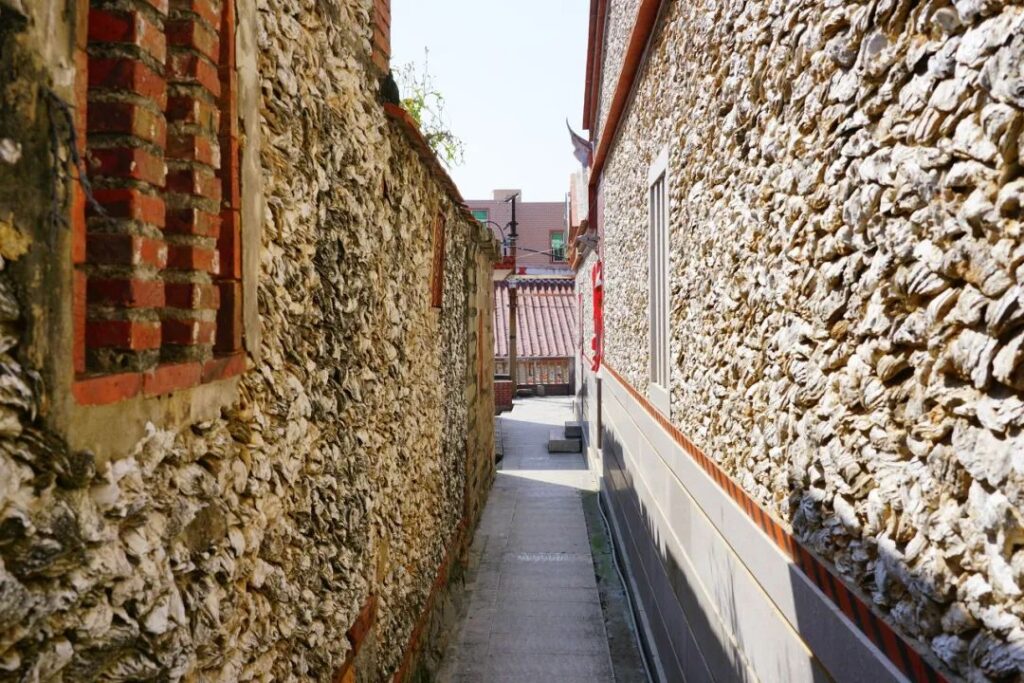

The Xianpu women living here are particularly unique. They have inherited the customs of the Middle Eastern Arabs, wearing flower-adorned buns, clove earrings, large-sleeved shirts, and wide-legged pants, forming a distinct and beautiful sight.

Chongwu Ancient City is a coastal stone city built to resist Japanese pirates.
It is the only completely preserved stone city among more than 60 garrison cities along the coast of China in the early Ming Dynasty, holding significant historical meaning.


At the same time, it is also known as the “Beidaihe of the South,” and the romantic Chongwu coast is one of the “Eight Most Beautiful Coastlines in China.” Visiting here not only allows you to appreciate the depth of history but also experience the romance and vastness of the sea.
Delving into the depths of Quanzhou is like entering a world filled with stories of time and brilliant lives. It not only has a sense of historical profundity but also a sense of the authenticity of life. Every corner is full of stories and warmth, making people linger and forget to leave.

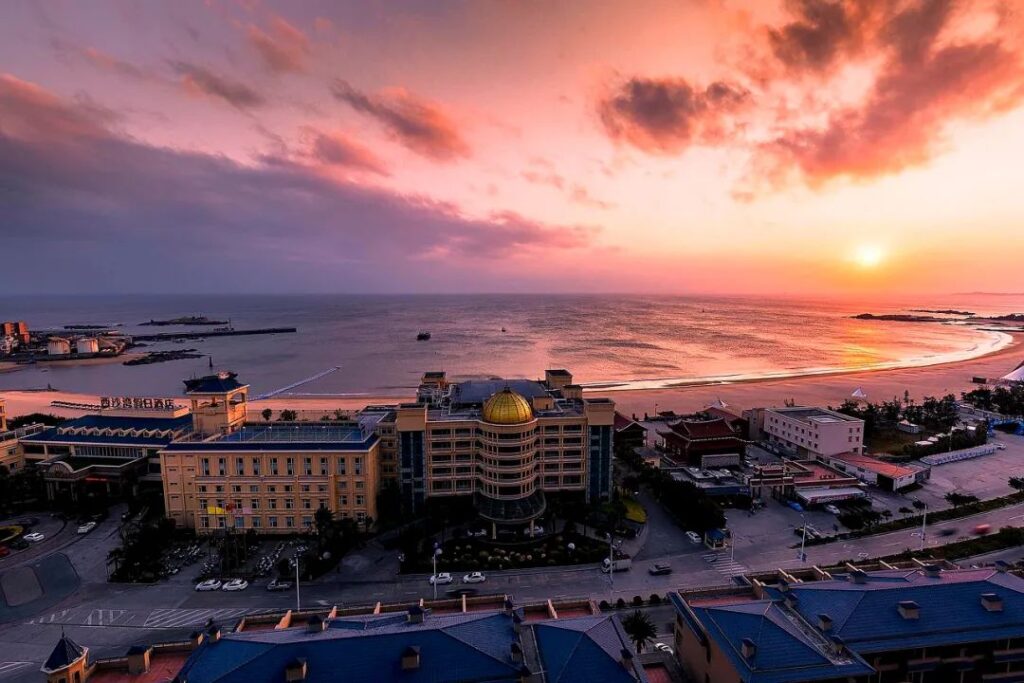
Quanzhou, this coastal small city, is like a dazzling pearl, embedded in the rippling coastline, exuding charming natural scenery.
Speaking of Xiaozuo, one cannot help but mention the dreamy Windmill Island.
The freshness here seems to be awakened by every continuously rotating white windmill. They stand like guardian deities in this sea area, dancing with the waves. Standing on Windmill Island, you can feel the power of the wind. The rhythmic gusts of wind, accompanied by the proud singing of the waves, make even the village’s broadcast sound pleasant to the ears.
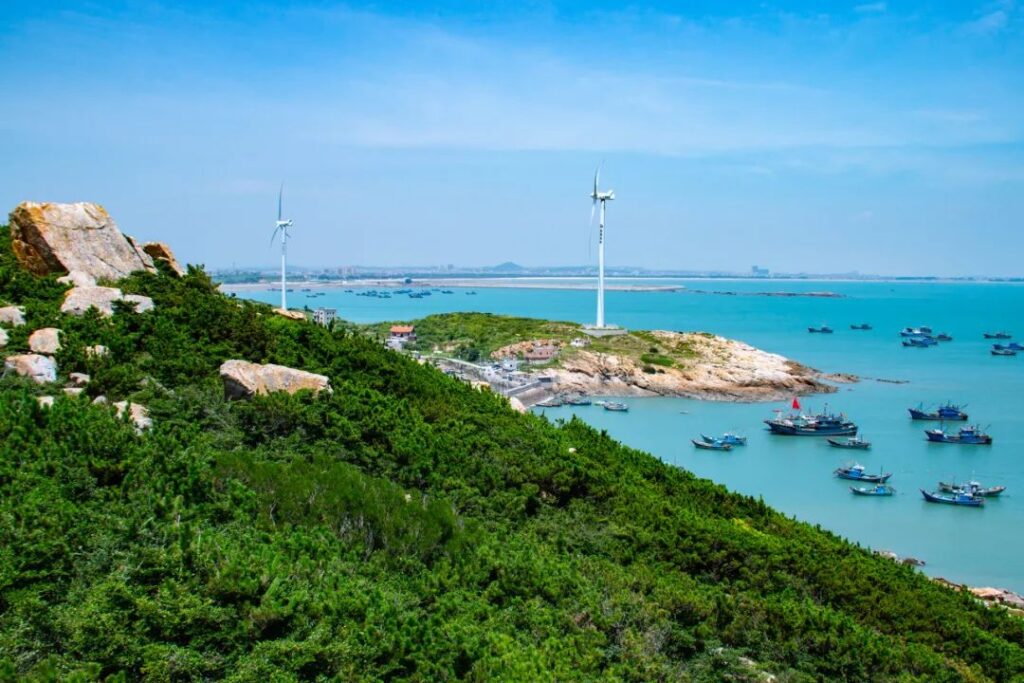

Hidden in this sea area is a rare antennae beach in the country.
It stretches towards the sea like a white jade belt, meandering and winding, surrounded by the sea on three sides, as unique as an insect’s antennae. This beach appears and disappears with the tides, and being able to witness its beauty with your own eyes is undoubtedly a stroke of luck.


Jinsha Bay, located in the Weitou port area of Quanzhou City, makes people feel as if they are in the romance of Bali.
The seawater here is crystal clear, like a giant sapphire. Sitting in the pine forest on the shore, you can leisurely watch the rise and fall of the waves, feeling that tranquility and ease.

In addition to enjoying the sea, Quanzhou has another tranquil place—Qingyuan Mountain.
As Quanzhou’s first 5A-level scenic spot, it is like a secluded paradise. Every weekend, people flock here to relax and savor the tranquility of nature. The mountain also has many tea-tasting spots where you can order a pot of clear tea, sit in a quiet environment, and slowly appreciate the unique charm of Minnan culture.
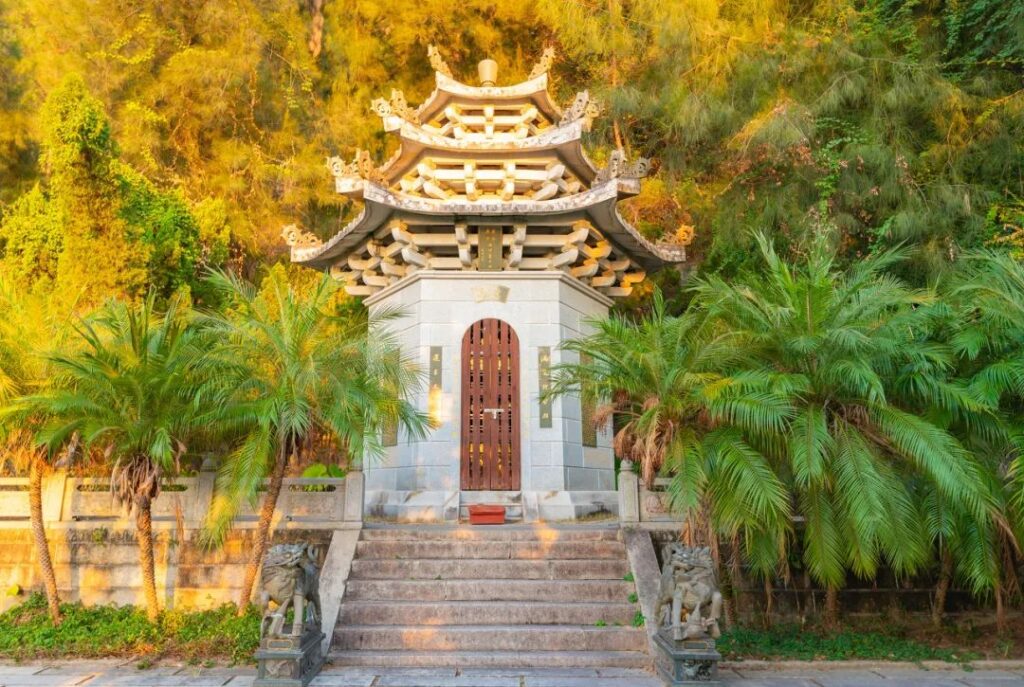
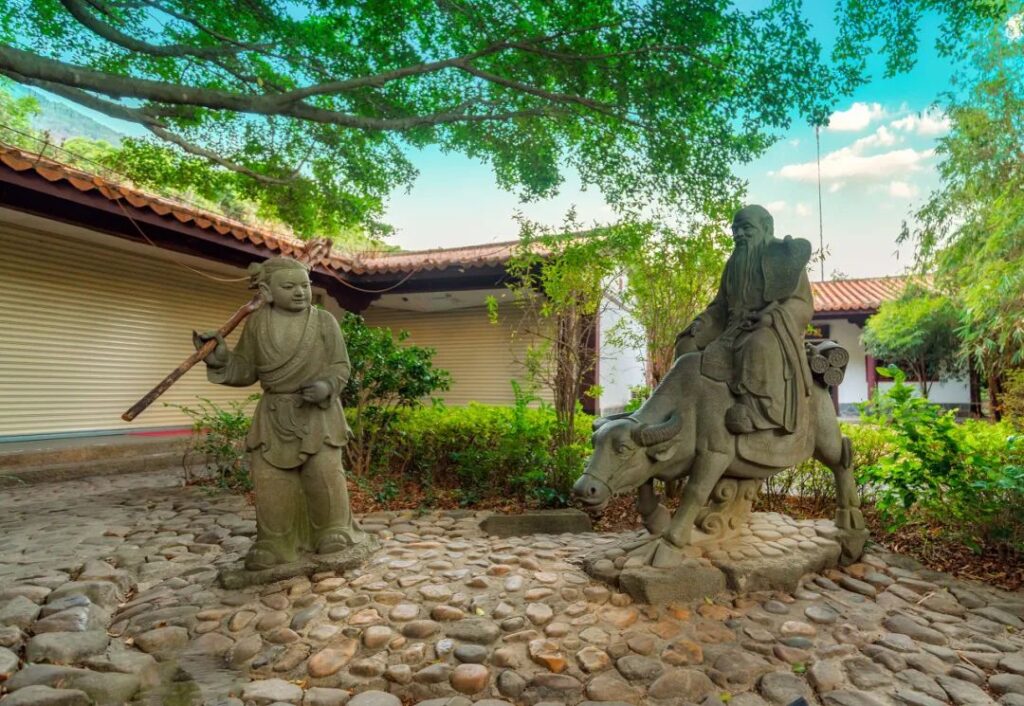
Of course, Quanzhou is not lacking in the charm of classical gardens.
West Lake Park is one of the best among them. The scenery here is beautiful, with flowers in full bloom. Every building seems like a work of art, worthy of careful appreciation. Strolling in the park, you can feel the serenity and elegance, as if immersed in a beautiful painting.
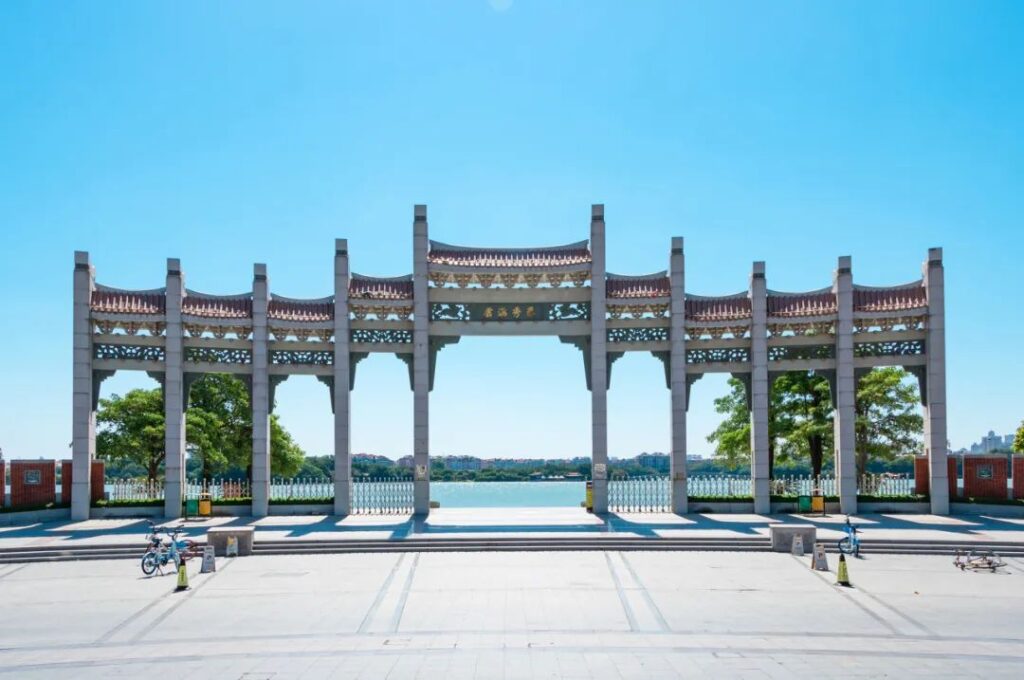
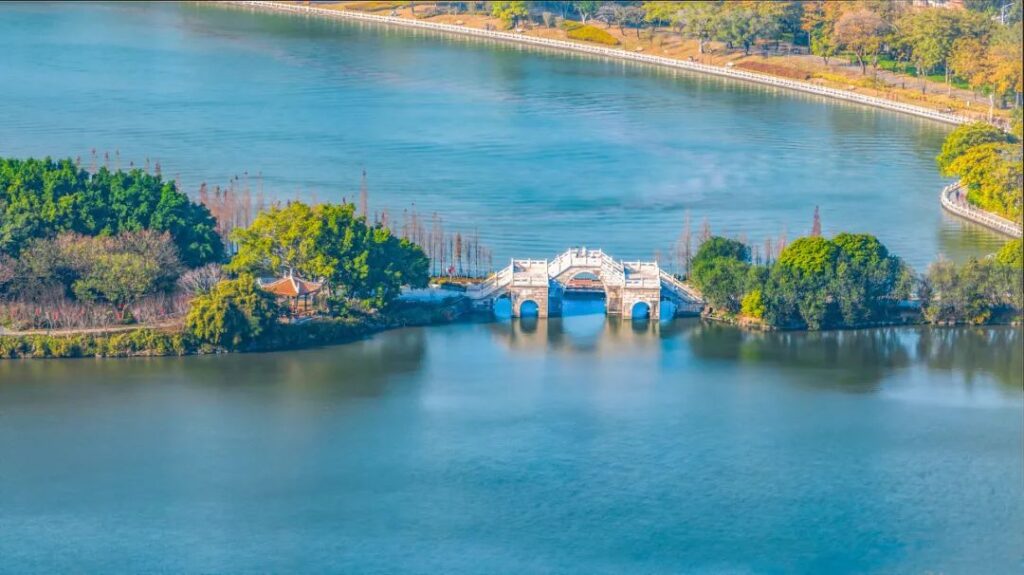
Authentic Old Flavors
To be honest, while the enchanting scenery of Quanzhou may be an unexpected delight, the true pursuit is the mouthwatering delicacies.
If there were to be a selection of “must-visit holy lands for foodies,” Quanzhou would undoubtedly be able to claim a top-three spot.

Unlike the spicy and fragrant flavors of Sichuan and Chongqing cuisines, Quanzhou’s food tends to showcase the rich and authentic tastes of the ingredients themselves.
A day in Quanzhou often starts with a steaming hot bowl of Mianxian Hu (a type of rice noodle soup). The broth that melts in your mouth, paired with your favorite toppings, leaves you feeling warm and satisfied after just one bowl.

The Shaorou Zong (braised meat sticky rice dumplings) drizzled with sweet and spicy sauce is even more irresistible. Taking a bite, your mouth is filled with a rich aroma. For friends who love sweet rice dumplings, this is definitely a bold attempt.

If you don’t want something too heavy, the piping hot Man Jian Gao (a type of fried rice cake) is your best choice. It seems to be Quanzhou people’s own “little cake,” simple yet delicious.

There’s also the crispy and chewy Oyster Omelette, with a taste that is pure to the extreme. The freshness of seafood and the aroma of scallions intertwine, enough to make one intoxicated.

Tusun Dong (a type of jelly), Shishi Tian Guo (Shishi sweet cakes), Ginger Duck, Runbing (spring roll-like pancakes), Vinegar Pork, Braised Duck, Jiuchong Guo (a type of cake), Anhai Kuntui (braised pig trotters), Hongxi Chicken Feet, Salty Rice… The names of these delicacies, like the charm of Quanzhou, are countless and dazzling.
Here, it seems like you can never finish eating, never have enough.

Walking in this ancient city, there is often a feeling of being in a different era, as if time has slowed down its pace here.
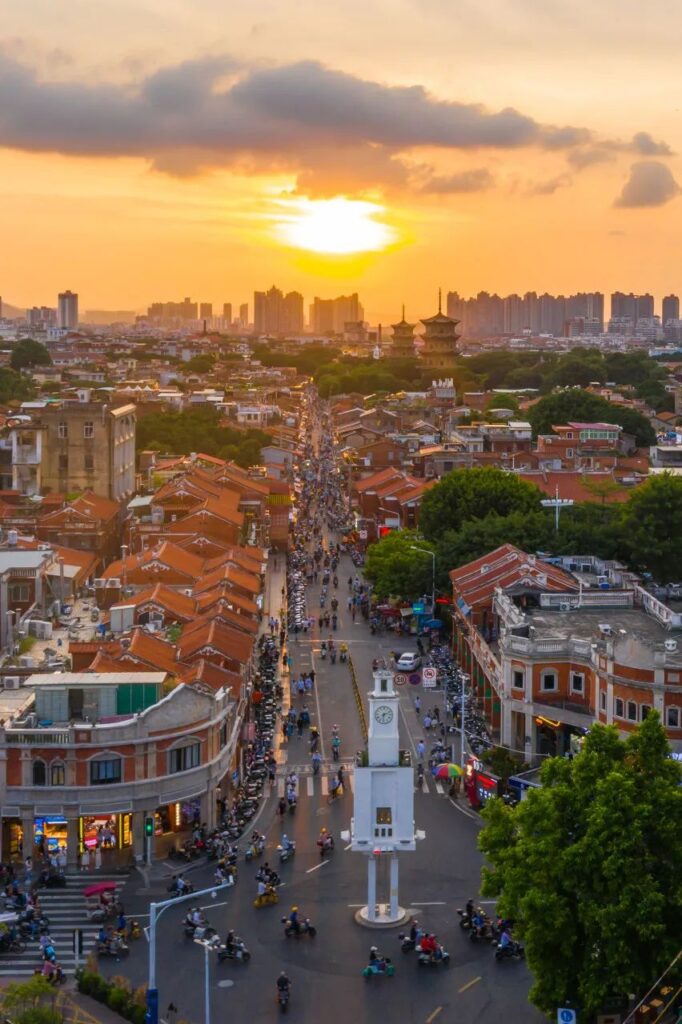
The architecture here is so similar to childhood memories, as if able to transport people back to that innocent era.

Skyscrapers are undoubtedly the symbol of modern cities, but cities like Quanzhou, which exude traces of time everywhere, are even more intriguing.
It is not just a place, but a carrier of history and culture, waiting for every traveler who loves food and history to explore.
